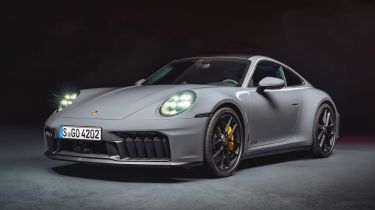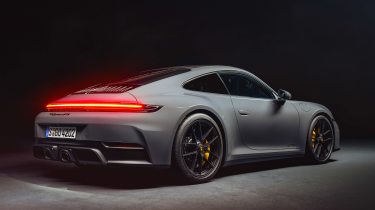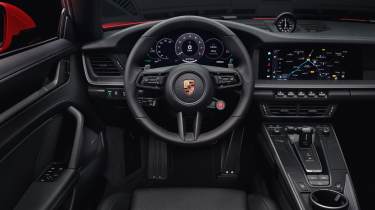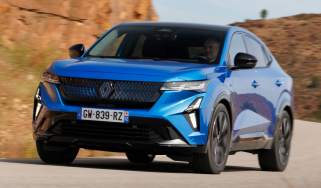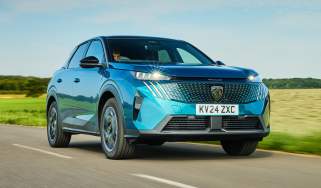New Porsche 911 revealed and it's got hybrid power
Porsche’s mid-generation 992.2 update introduces a hybrid powertrain for the first time
The long-awaited Porsche 911 hybrid has been revealed alongside a wider update across the iconic sports car range. Now in its new 992.2 generation, the revised coupe is being headlined by the GTS, which features a new hybridised engine.
More variants are set to come on stream over the following months, but for now the range will launch with base Carrera, as well as the aforementioned GTS. Available to order now, prices will start at £99,800 for the Carrera and £132,600 for the GTS, with deliveries due towards the end of the year.
At the GTS model’s core remains a turbocharged flat-six engine, which has been bored out to 3.6 litres and optimised to suit a brand new type of lightweight hybrid module called T-Hybrid. The system comprises two electric motors that draw power from a compact 1.9kWh lithium-ion battery running a 400V electrical system. The first of these motors is mounted within a new electrically-assisted turbocharger between the compressor and turbine, replacing the previous GTS’s purely gas-driven twin-turbocharger setup.
By placing an electric motor inside the turbocharger, it can instantly build boost pressure when the throttle is opened, rather than waiting around for the exhaust gases to reach it. This is similar in principle to the electric turbo that Mercedes-AMG has been fitting to some of its new models like the C 63 S E Performance, but the added feature here is an ability to also act as a generator which can feed energy back into the Porsche’s battery.
All this is joined by that second electric motor mounted within the eight-speed PDK’s transmission housing, which is capable of producing up to 54bhp and 140Nm of torque. Drive from this motor is added directly to the driveline, and also powers some of the ancillaries like the air conditioning condenser, eliminating the need for drive belts and therefore tightening the engine’s packaging. Combined with the flat-six engine, the T-Hybrid powertrain is capable of producing peak power and torque figures of 533bhp and 610Nm, while only adding 50kg to the overall weight.
Performance figures for the new model are improved compared to the previous GTS, with a 0-62mph time of 3.0 seconds and a 193mph top speed. This represents a 0.4-second improvement in acceleration, though the top speed is unchanged. Due to the second electric motor being mounted within the PDK’s housing, the hybrid powertrain won’t be available with a seven-speed manual option, but an all-wheel drive Carrera 4 GTS is on the cards.
There have been tweaks elsewhere to the GTS’s chassis, with standard fitment of rear-wheel steering, plus an upgraded version of Porsche’s PDCC active chassis control system which now uses the 400V electrical setup to power new electro-hydraulic actuators.
The base Carrera retains the previous 3.0-litre twin-turbocharged flat-six unit with a few smaller upgrades. These include the use of the previous GTS’s larger turbos which bump power up to 388bhp (9bhp more than before), while torque is unchanged at 450Nm. In addition, the Carrera inherits the 911 Turbo’s intercoolers, which now sit directly above the engine. The range will launch without a manual option in the base Carrera, but more non-hybrid variants will come along with the likely option of a manual alongside.
This isn’t just a powertrain update, however. All GTS models pick up a more distinctive front bumper that feature new movable vanes and flaps behind the splitter that actuate based on cooling and downforce requirements. There’s also a more comprehensive aero package with a static rear wing available on the options list.
Shared between all 992.2 models are a further set of subtle styling changes including new headlights that now incorporate all of the lighting functions on the front end for the first time. There’s also a new set of rear lights that are said to be more three-dimensional, plus there’s a range of new colour and wheel options.
Inside, the changes are limited to a new fully-digital instrument cluster, waving goodbye to the physical analogue rev-counter that’s been at the heart of all 911 interiors since the model’s introduction in 1964.
Click here for our list of the best performance cars...
Find a car with the experts

